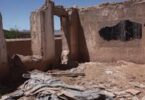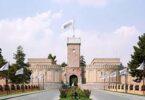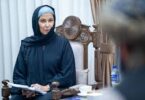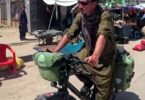Monitoring Desk
KANDAHAR CITY: Afghan military officials organized and led a two-day humanitarian aid and disaster response planning exercise at the Kandahar airfield, the Resolute Support mission said on Tuesday.
Afghanistan is prone to earthquakes, flooding, drought, landslides and avalanches. On average, such disasters affect roughly 200,000 people each year, according to a statement from the NATO-led mission.
The two-day exercise on March 18 and 19 was designed to review and develop Afghan responses and procedures for simulated drought, floods and refugee crises.
Drought and flood represent two of the more common disaster events that affect the greatest number of people in Afghanistan are. In addition, the potential mass return of Afghans residing in foreign poses another possible humanitarian crisis that would require a significant response.
Senior Ministry of Defence officers established courses of action for each of the three simulated disasters. These plans incorporated the roles of the various military branches, government and non-government agencies, as well as the international community.
“This is very important because this is the first time in my country we have had a planning exercise and courses of action like this,” said Col. Toreliy Sadiqy, G7 director of International and Domestic Training at the MoD.
“We will go from here and take the information that we have learned back to our corps and divisions, and from military to civilian organizations,” he added
Each of the Afghan officers in attendance is considered a subject-matter expert in their respective field. This type of cross-department coordination is vital to the success of the MoD and the Afghan government when it comes to mitigating the effects of a natural or man-made disaster.
Col. M. Surosh Niazi, director of training at Marshal Fahim National Defence University, said the exercise provided a valuable insight into how the Afghan military would react during a crisis.
“In order to win any battle, you need to know as much about yourself as you do about the enemy,” Niazi remarked. “This week, we learned a great deal about ourselves and how to utilise our strengths and capabilities.
“We will now be able to better coordinate our activities in order to give a quick, positive response to any disaster.” The exercise not only brought together members of the Afghan MOD and local governmental officials, it allowed different ANA Corps-level personnel to think through how an incident in one part of the country could have an effect elsewhere.
Prior to the start of the exercise, Afghan officials, with help from coalition military advisors, spent seven days planning for the event. The planning efforts would lay the foundation for a successful exercise and future operations.
Dr. Daniel Brush, senior disaster and emergency response advisor with Resolute Support, said: “Over the course of the week we have seen different parts of the MoD coordinating and discussing what their roles will be, and how to properly attack a situation if it requires humanitarian assistance.”
The advisor added: “And what you see is progress in understanding roles and responsibilities in the prioritization of response by different agencies within the MoD.”
Brush explained disasters would be handled from the district level up, meaning that if a crisis exceeds the capabilities of a district, a request for support would go to the provincial governor, and if needed, the national level.






